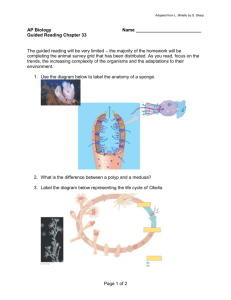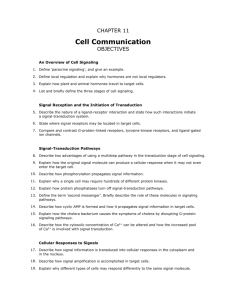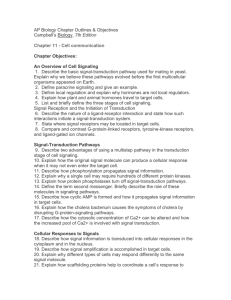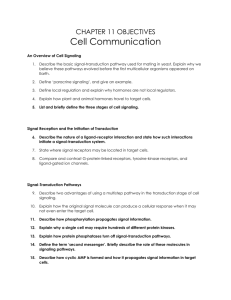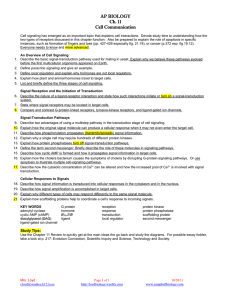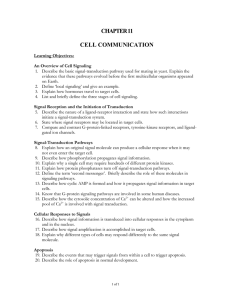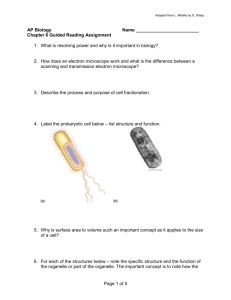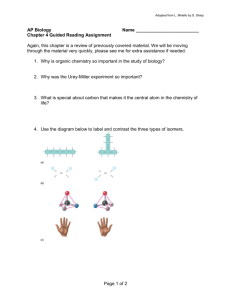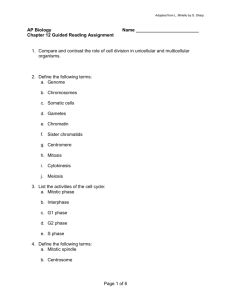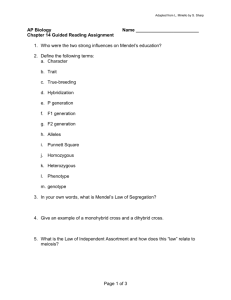Chapter 11 Guided Reading
advertisement
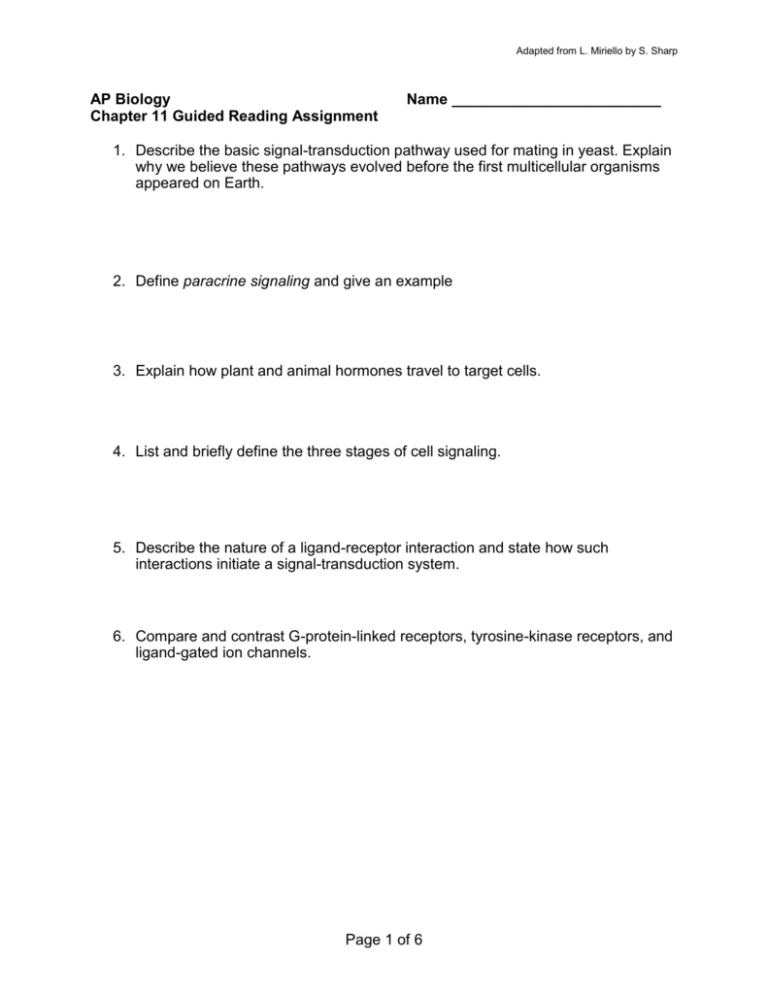
Adapted from L. Miriello by S. Sharp AP Biology Chapter 11 Guided Reading Assignment Name _________________________ 1. Describe the basic signal-transduction pathway used for mating in yeast. Explain why we believe these pathways evolved before the first multicellular organisms appeared on Earth. 2. Define paracrine signaling and give an example 3. Explain how plant and animal hormones travel to target cells. 4. List and briefly define the three stages of cell signaling. 5. Describe the nature of a ligand-receptor interaction and state how such interactions initiate a signal-transduction system. 6. Compare and contrast G-protein-linked receptors, tyrosine-kinase receptors, and ligand-gated ion channels. Page 1 of 6 Adapted from L. Miriello by S. Sharp 7. Label the following diagrams and identify if it is a G-protein receptor, tyrosinekinase receptor, or ligand-gated ion channel: Page 2 of 6 Adapted from L. Miriello by S. Sharp 8. Describe two advantages of using a multistep pathway in the transduction stage of cell signaling. 9. Explain how the original signal molecule can produce a cellular response when it may not even enter the target cell. 10. Describe how phosphorylation propagates signal information. Page 3 of 6 Adapted from L. Miriello by S. Sharp 11. Label the diagram below: 12. Define the term second messenger. Briefly describe the role of these molecules in signaling pathways. 13. Describe how cyclic AMP is formed and how it propagates signal information in target cells. 14. Label the diagram below: Page 4 of 6 Adapted from L. Miriello by S. Sharp 15. Explain how the cholera bacterium causes the symptoms of cholera by disrupting G-protein-signaling pathways. 16. Describe how the cytosolic concentration of Ca2+ can be altered and how the increased pool of Ca2+ is involved with signal transduction. 17. Describe how signal information is transduced into cellular responses in the cytoplasm and in the nucleus. 18. Describe how signal amplification is accomplished in target cells. 19. Explain why different types of cells may respond differently to the same signal molecule. Page 5 of 6 Adapted from L. Miriello by S. Sharp 20. Explain how scaffolding proteins help to coordinate a cell’s response to incoming signals. Page 6 of 6
